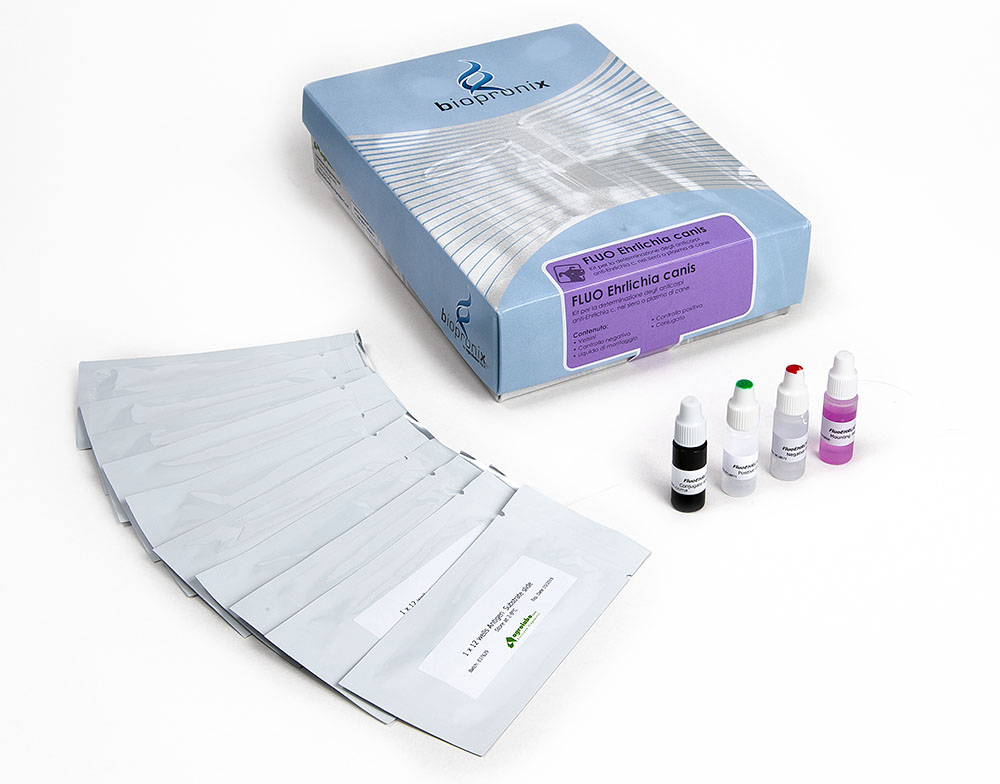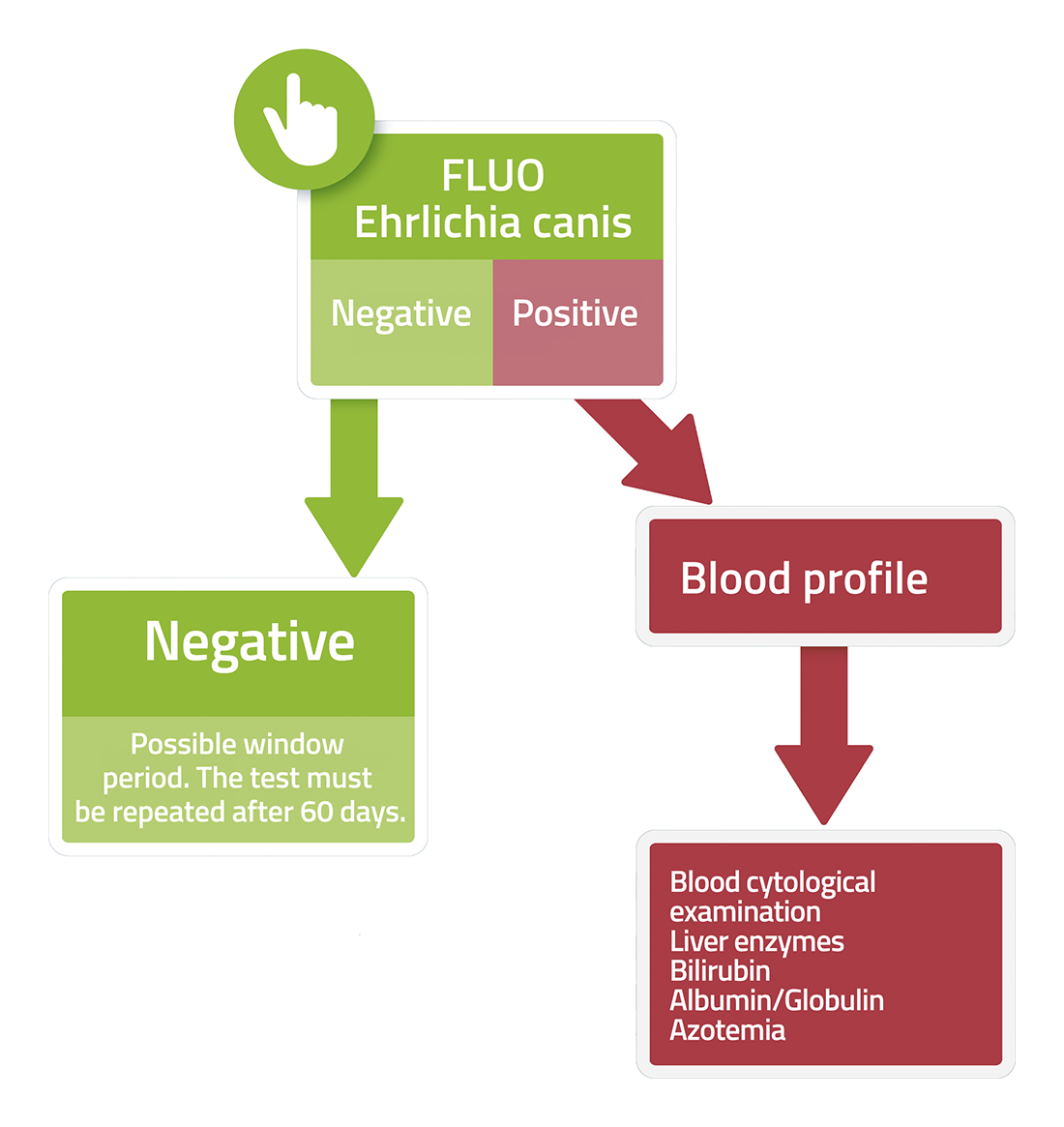FLUO EHRLICHIA canis
IFA kit for the detection of anti-Ehrlichia canis IgG antibodies
Fluo EHRLICHIA canis is a test based on the immunofluorescence technique for the detection of IgG antibodies to Ehrlichia canis in dog serum or plasma samples.
Canine ehrlichiosis is a tick-borne disease caused by Ehrlichia canis, an intracellular parasite belonging to the Rickettsial genus, which infects red blood cells up to cause alteration of their functioning and destruction of platelets.
Ticks become infected by taking blood from a dog presenting with the disease, both in the larvae and nymph stages, act as a reservoir of disease and can transmit the infection to sensitive dogs for at least 150 days after acquiring the infection .
Erlichiosis has a worldwide spread; in Europe it is mainly present in Italy, Spain and Portugal.
The evolution and outcome of the infection depend on a great variety of factors, including the bacterial load received. The presence of concomitant diseases, sustained by other parasites carried by ticks or other pathogens, can influence the manifestations and severity.
There are no age or sex predispositions for ehrlichiosis, however the German Shepherd seems to be more susceptible than other breeds.
The course of the disease was divided into three phases: acute, subclinical and chronic, based on clinical symptoms and clinical-pathological abnormalities.
The acute phase has a duration of 2 – 4 weeks, during which it is possible to observe symptoms such as:
- fever
- oculo-nasal discharge
- anorexia
- depression, lethargy
- petechiae
- bruising
- lymphoadenomegaly in 20% of cases
- splenomegaly in 25% of cases.
.
Most dogs recover from the acute form with appropriate therapy.
Untreated dogs can undergo the subclinical phase.
In this form, body weight normalizes and pyrexia resolves. Dogs appear clinically healthy, however their platelet counts may remain below reference values. Dogs can stay in this stage for years.
The chronic form is characterized by a reduction in hematopoiesis, which can lead to pancytopenia. The prognosis in this phase is poor, death occurs from secondary infections and / or haemorrhage.
Other symptoms that can arise are:
- eye symptoms: change in the color and appearance of the eye, blindness, retinal diseases, anterior uveitis
- neuromuscular symptoms: meningitis and / or haemorrhagic state, neuropathies, convulsions, atrophic muscles
- polyarthritis
- concomitant or secondary infections.

